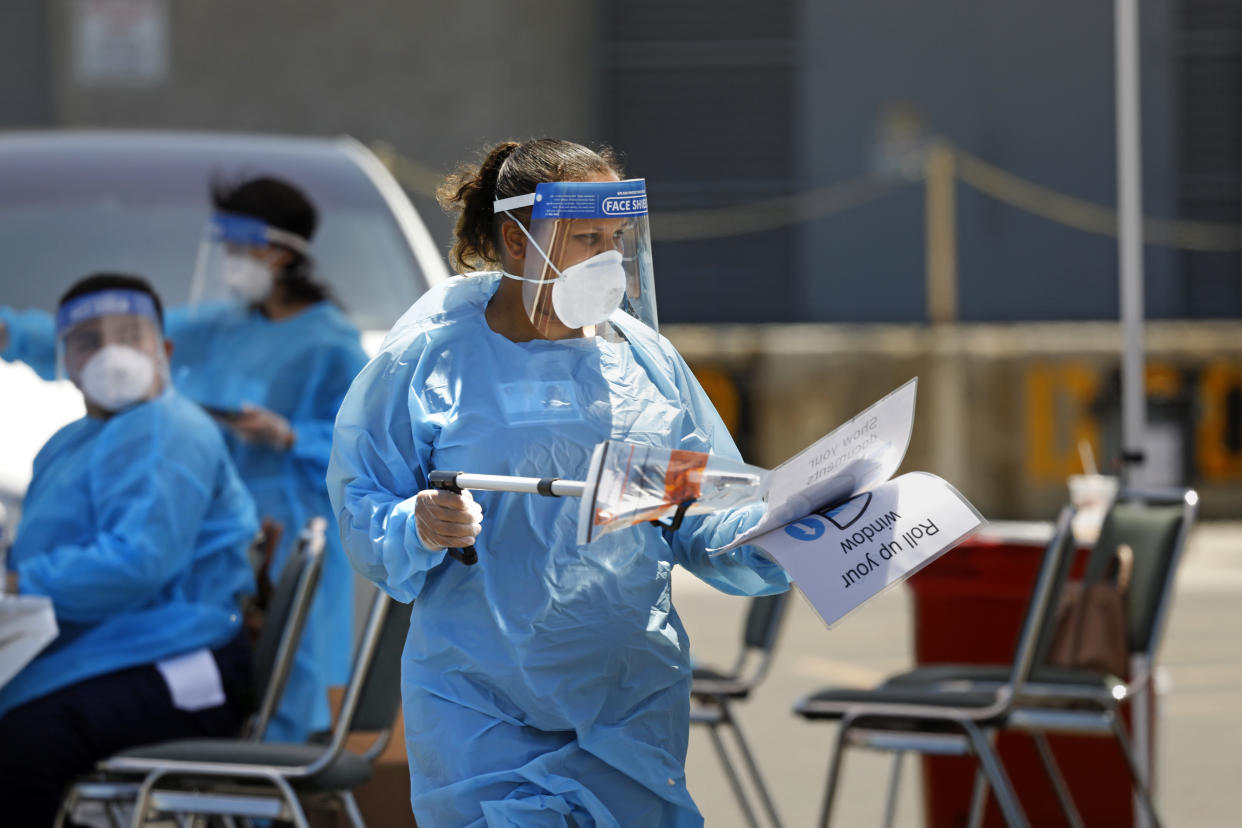CDC study shows COVID-19 cases may be 10 times higher than reported

New research published in JAMA Tuesday suggests states have been drastically underreporting COVID-19 cases — a fact that experts say underscores the need for more robust and rapid testing.
The study, performed with the Centers for Disease Control and Prevention, analyzed routine blood samples of more than 16,000 individuals between March 23 and May 12. Over 90 percent came from individuals who were over age 18 and more than half were women. The samples came from 10 different states and were tested for the presence of antibodies to SARS-CoV-2, the virus that causes COVID-19.
As anticipated, the number of overall infections represented just a small portion of the population in each region (ranging from 1 percent in the San Francisco Bay Area to 6.9 percent in New York City), but the number of infections was far higher than expected — ranging from six to 24 times greater than what had been reported. The study bolsters earlier comments from CDC Director Dr. Robert Redfield, who said in late June that the infection rate could be 10 times higher than reported.
In Missouri, where the biggest discrepancy occurred, researchers estimated that more than 160,000 people had developed antibodies between late March and mid-May, 23.8 times as many as the state reported. Six more states (Conn., Fla., La., N.Y., Utah and Wash.) all had infection rates 10 times higher than reported, with Connecticut showing the lowest disparity in numbers.
While it’s too soon to draw conclusions about whether these antibodies lead to immunity, Yahoo Life Medical Contributor Dr. Dara Kass says the research is proof that testing in the U.S. has fallen short. “What this says is that we were under testing disease cases — active cases — in real-time,” says Kass. “And we’re still under-testing people today.” She notes that this lack of accurate data about the number of cases in each state can have dangerous implications.
In Missouri for example, local leaders decided to allow the opening of summer camps in late May — a week after Governor Mike Parson announced that 90 percent of those tested for COVID-19 in the state had been negative. That decision was criticized weeks later when 82 individuals became infected at one camp alone, forcing it to close. “They were probably under testing, but they were also under-reporting,” says Kass. “Goes to show you can only hide from the facts for so long.”
Dr. William Schaffner, an infectious disease expert at Vanderbilt University School of Medicine points out that asymptomatic individuals — i.e., those without symptoms — are likely the population that was missed. “In those 10 sites around the country, at that time of the year, two things were evident. One, the proportion of people that had positive antibodies was higher than you might have anticipated ... and two, that was probably a consequence of asymptomatic transmission,” says Schaffner. “And that’s a very important point. This virus is getting out beyond us. If you translate it to today, as much as you think is out there, there’s more, a lot more. The house is on fire.”
In agreement is Dr. Amesh A. Adalja, senior scholar at the Johns Hopkins Center for Health Security. Adalja says that restrictions on testing likely made it difficult for those who weren’t severely ill to get tests — and likely, still does. “Many parts of the country say, ‘If you don’t have symptoms or you’re not one of the priority groups for testing, just stay home for 14 days,’” says Adalja. “They’ve got a long turnaround time. And if you're a person that's sick with mild illness and you don't want to wait in your car for eight hours at a drive-through to get a test result back in 10 days, then why would you?”
Adalja says the result is a nation ripe for asymptomatic spreading. “Those people that are not getting tested, some of them are basically going about their daily lives and they're transmitting it to other people,” he says. “And they’re going to set up chains of transmission.”
It’s a problem that gets even more troubling, according to Schaffner, when you consider how many people are still susceptible to the virus. “A huge proportion of the population didn’t have antibodies — that means this COVID virus has many more people it can infect. So our prevention activities are very important because this virus can continue to march through our population, making many people sick, requiring many hospitalizations,” Schaffner says. “This virus is still at the beginning of what it's doing to our population — and that’s the real wake up call here.”
For the latest coronavirus news and updates, follow along at https://news.yahoo.com/coronavirus. According to experts, people over 60 and those who are immunocompromised continue to be the most at risk. If you have questions, please reference the CDC’s and WHO’s resource guides.
How to maintain your physical and mental health during the pandemic
Taking care of a loved one with COVID-19? Here’s how to stay healthy
Q&A with Dr. Kavita Patel: How to keep your family safe and maintain your mental health
Read more from Yahoo Life
Why didn’t summer kill the coronavirus? Experts explain what White House officials were missing
‘I’m proud of my disability’: How a wheelchair ramp and the ADA changed my life
Want daily lifestyle and wellness news delivered to your inbox? Sign up here for Yahoo Life’s newsletter.


